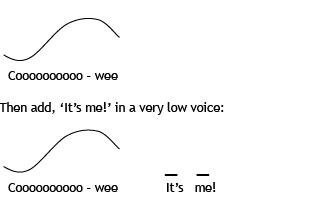Warm-up exercises for singing don’t have to be boring. It isn’t written anywhere that the only way to warm up is by singing an arpeggio up and down while saying “la la la la la la la.” The best singers, singing coaches, and choir conductors know that to get the best results rehearsal must be varied and creative. This applies to warm-up exercises as well. Here are some simple tips that will make your warm-up exercises more fun, original, and varied.
Get rid of the notes!
Sheet music is necessary, but warm-ups aren’t about learning a new song. They’re about getting into the right mood and letting our singing apparatus warm up so it is ready to belt out some notes. In this sense, random sounds, tongue-twisters, and slides are your best friends. By making sounds that aren’t traditionally used when singing, you are giving your whole singing mechanism a warm-up, including those parts that you don’t normally use. Making noises that aren’t normally used when singing is also a fun way to get a choir ready for a rehearsal or a performance, and little kids love it.

The “roller coaster” is a great way to practice sliding from one interval through the next, and the great thing about it is that it can be different each time you use it. Simply draw a squiggly line and follow it up or down, stopping on certain notes. At first it will be somewhat chaotic but, as a group warms up, they’ll start to listen to each other and find a certain unity. Another great way of forgetting about the notes for a while is playing “follow the leader.” In this case have one of the soloists, the conductor, or perhaps a different member of the choir each time, sing or yell out different sounds which the group has to sing back. There are other games you can play which combine “follow the leader” and making fun sounds to get warmed up. Some simple ones are “Coo-wee, it’s me!” and trying call and response chants.

Something that works great with children is making animal sounds. For example, you can do your normal modulations and arpeggio exercises with the “moo” syllable like a cow or a “baa” syllable for a sheep while the kids also act like that particular animal.
It’s not only about singing!
A good warm-up session isn’t only about physically warming up the parts of your body that are used for singing, it must also get you in the mood for a performance or rehearsal emotionally and psychologically. As any musician knows, you cannot practice effectively if you aren’t fully engaged in what you’re doing. That’s why it’s important to remember that attitude counts.
Warming up isn’t only about singing. There are many warm-up exercises for singing that do not involve singing at all. If you practice yawning, or fake sneezing, you are actually practicing the correct position to get the ideal resonance when singing. Clapping, stomping your feet, and diverse hand gestures can get a choir pumped up for practice, boost teamwork, and help reinforce a sense of rhythm. Incorporating simple dance moves into a choir warm-up can help greatly with breath control and educating the diaphragm.
Don’t be afraid of being silly.
The best way to get music students to keep practicing is by making music fun. There is a time for being serious and demanding, but warm-up and cool-down time is not it. You can lighten the mood and make rehearsal fun by playing around with the repertoire you are singing. Take a part of a song you are working on and as a warm-up sing it really slow and gradually make it faster, until it becomes a blur and comes apart. You can also do this with a simple scale and arpeggio combination, pushing them to sing it faster and faster.

You can also take a round that your choir uses to warm up and have your students replace the words with something silly or nonsensical. In fact, there is no need for words, an exercise that children love is taking a song they are used to singing and replacing all the lyrics with silly frog or monkey sounds.
The fact is that warm-up exercises don’t have to be limited to boring scales and arpeggios. The best way to grow musically is through creative variation. Instead of mindlessly repeating, or having your choir repeat, an exercise everyone has done hundreds of times before, be creative and give it a twist. In the end it will serve the same purpose, warming up the singing apparatus. However, if you are creative warm-ups can also be fun, inspiring, and motivating.
You’ll find a lot of Singing and vocal warmups in the choir warmups collection available from this website.


